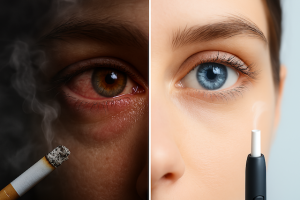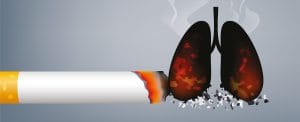World Oral Health Day is celebrated every year on 20March. But what are the new frontiers on the topic? There are multiple factors that undermine oral health, and cigarette smoking is one of the leading causes of poor aesthetics and a deterioration in oral health indices.
Catania, March 20, 2024 – Oral health, and specifically the appearance of our smile, can determine the impact we have on others in everyday life and has a considerable impact both in work relationships and in interpersonal ones.
On the occasion of World Oral Health Day, it is necessary to emphasize those habits that seriously damage the overall health of the mouth and the best strategies to counteract them. Cigarette smoking is one of the main causes of periodontitis, bad breath, and yellow teeth.
Although the harmful effects of cigarette smoking on the oral cavity are well known, many smokers struggle to quit smoking. In this context, the choice of combustion-free devices could help smokers reduce smoke damage. According to researchers at CoEHAR, the Center of Excellence for the Acceleration of Harm Reduction at the University of Catania, the use of such devices has a positive impact on oral health.

In recent months, CoEHAR researchers presented the first results of the SMILE study, the research project that measures changes in oral health parameters and dental aesthetics of over 400 smokers who switch from conventional cigarettes to combustion-free products. The international project, conducted thanks to the collaboration of research centers in Italy, Poland, Moldova and Indonesia, aims to evaluate whether the reduction and absence of exposure to cigarette smoke toxins may translate into measurable amelioration in gingival health, dental plaque build-up, and dental aesthetics. The initial evidence already shows significant changes.
Published results have highlighted a significant improvement in dental discoloration among former smokers who have switched to electronic cigarettes and heated tobacco products, showing whiter teeth compared to current smokers.
But cigarettes do not only negatively impact the appearance of teeth but also the onset of dental pathologies including cavities and periodontitis, whose development is favored by the accumulation of bacterial plaque. Typically, the assessment of dental plaque accumulation is based on the use of clinical indices that may be subject to some degree of subjectivity during their detection and variations in the protocols used. Obstacles that can now be easily overcome using new digital systems for dental plaque detection and monitoring.
According to a recent literature review conducted by CoEHAR, out of a total of 13 studies published between 2015 and 2023, digital systems based on 2D and 3D image acquisition, including those using fluorescence technology, have proven to be a valid method for assessing dental plaque, comparable to traditional clinical indices.
The data from these works as a whole can be used to assess the impact in terms of risk/benefit ratio of the regular use of combustion-free products, assisting the efforts of public health authorities in encouraging smokers to quit, especially those who perceive their smoke-damaged smile as a barrier to personal health or work and social relationships.




